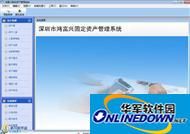
Asset management is a problem that almost any organization (government, enterprise or institution) will be involved in. The level of asset management affects work efficiency and cost in a small way, and affects the asset operation and competitiveness of the organization in a big way. Usually, as the scale of an enterprise continues to expand and the number and value of assets increase, the enterprise will increasingly feel that basic management is weak! Primitive management methods! Inefficient management! Information silos are serious!
Product features and main functions:
1. The system is independently deployed in the user unit, so there is no need to worry about the leakage of data security and business secrets.
2. Support the multi-level structure of headquarters and branches.
3. Asset library: Supports importing asset initialization files, generating QR code labels, and asset pictures.
4. Asset warehousing: The asset manager initiates a warehousing application and fills in the warehousing application form. The warehousing form includes information such as asset code, asset name, quantity (fixed to 1, and one code for each item is maintained). After the asset warehousing order is entered, the next step is the asset warehousing approval. Only after the approval is passed will it officially enter the asset library.
5. Asset withdrawal: Asset withdrawal includes asset borrowing and asset loss reporting. Assets borrowed out of the warehouse means that the assets have been temporarily misappropriated and loaned out, and will be returned to the warehouse when the time comes; assets reported as damaged and out of the warehouse mean that the depreciation period of the assets has expired, they have been cleared out of the warehouse, and they are no longer counted as fixed assets of the unit.
6. Asset inventory: re-verify and count the assets in use by the unit, including quantity, value, department to which they belong, users, etc.
7. Asset allocation: If the unit using this system has multiple branches, the assets of all branches will be managed and allocated uniformly. In order to reasonably coordinate and utilize the assets of the entire system, assets can be allocated, that is, transferred from one unit to another to achieve reasonable distribution.
8. Asset depreciation: Calculate the value, depreciation value, current value, etc. of all fixed assets in storage every month.




 360 Guardian
360 Guardian
 360 software manager
360 software manager
 driver wizard
driver wizard
 Baidu Skydisk
Baidu Skydisk
 360 browser
360 browser
 WPS Office
WPS Office
 QQ game hall
QQ game hall
 Lightning simulator
Lightning simulator
it works
it works
it works